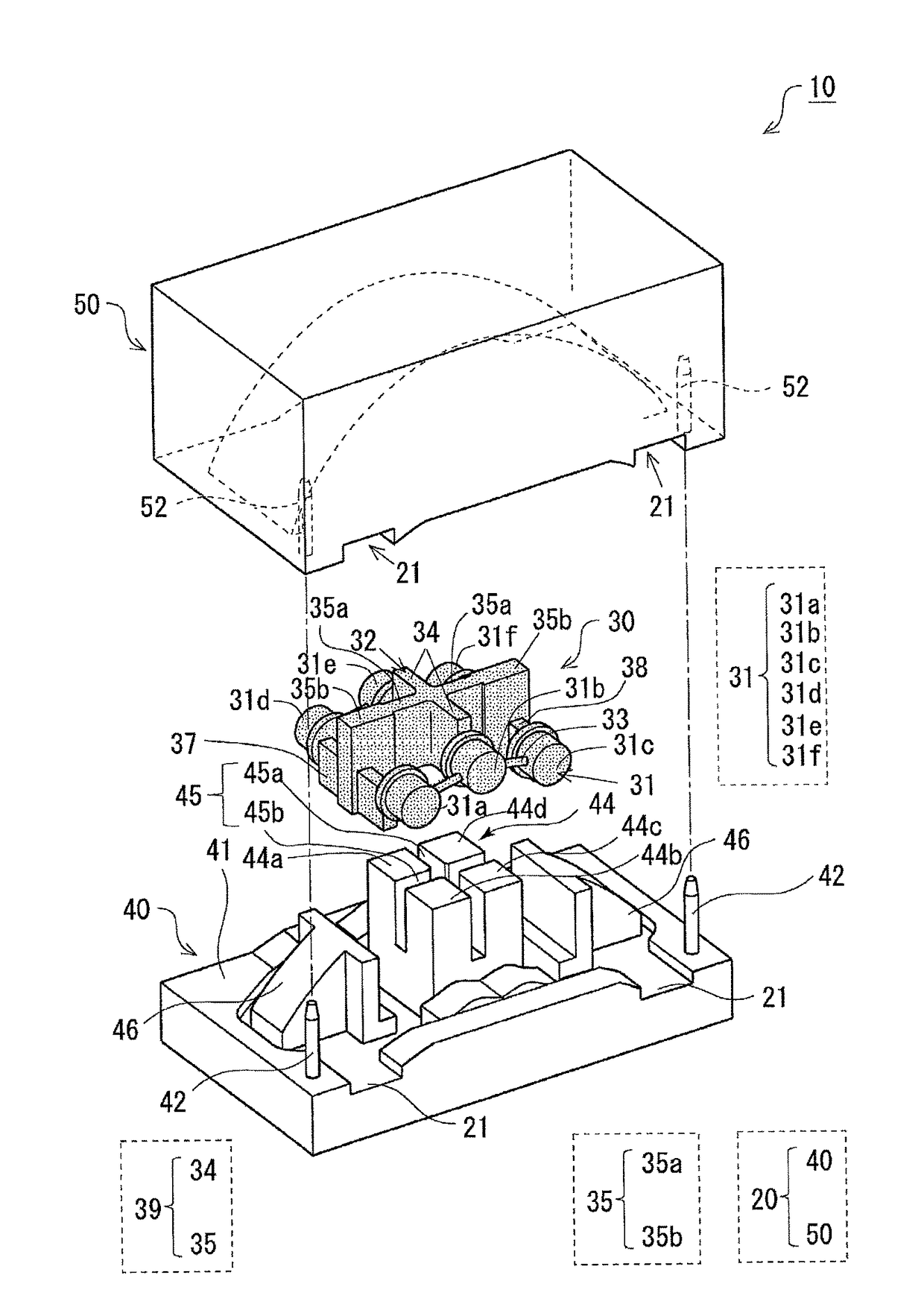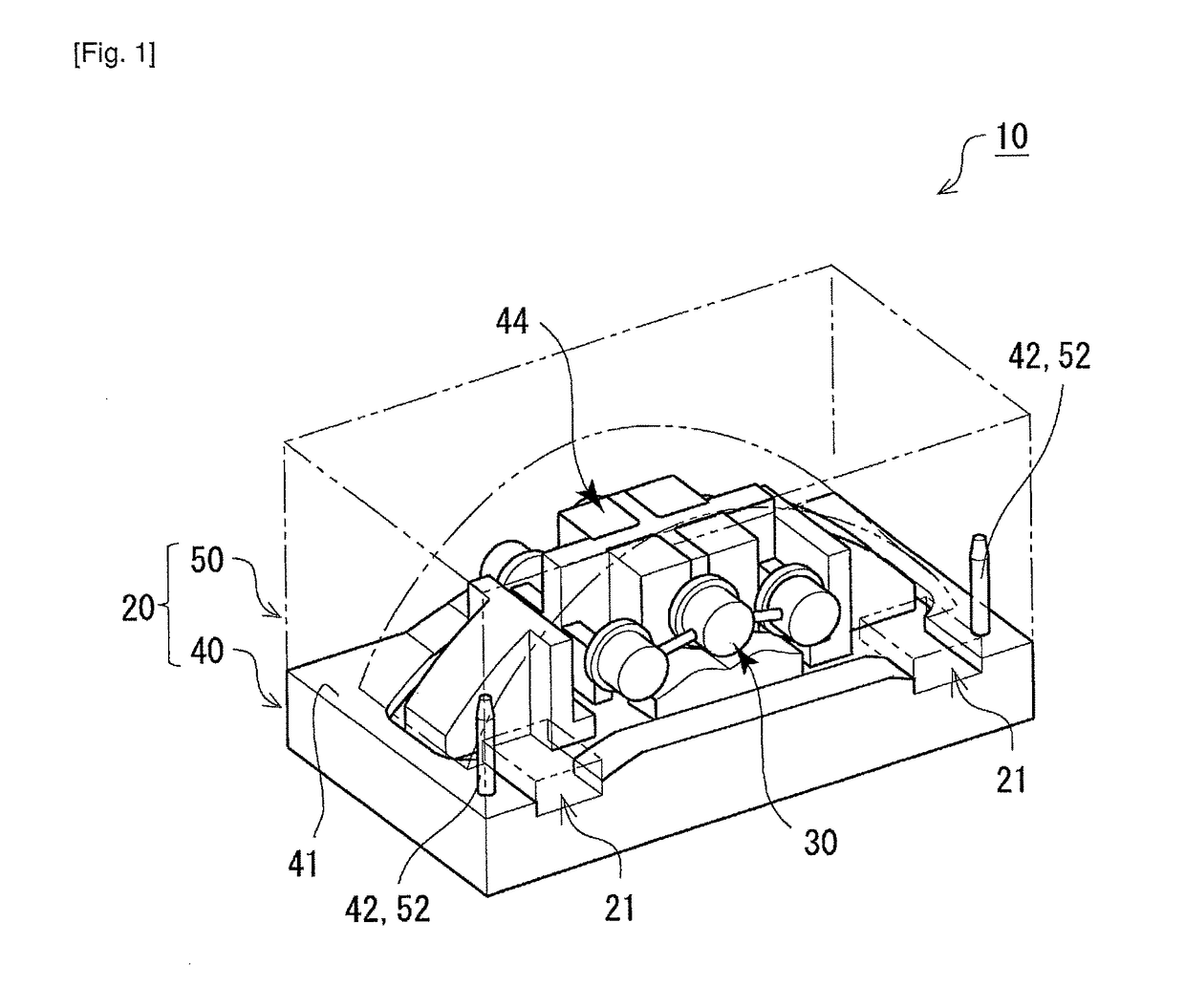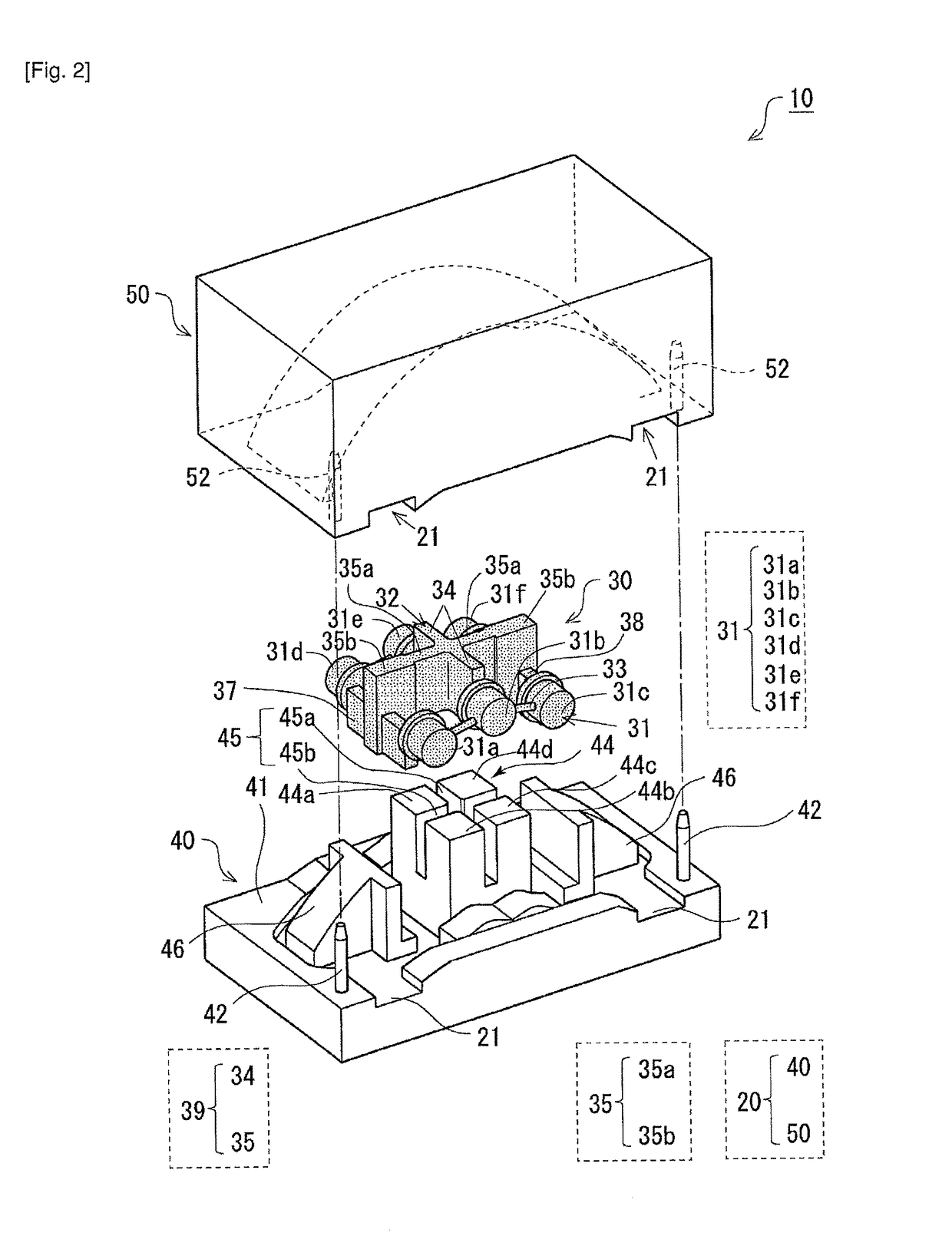Caliper casting device, core and mold used in caliper casting device, caliper for disc brake, and manufacturing method thereof
a casting device and disc brake technology, applied in the direction of manufacturing tools, foundry patterns, molds, etc., can solve the problems of affecting the quality of casting products, and it is difficult to sufficiently prevent the shrinkage cavity, so as to increase the assembling position of the cor
- Summary
- Abstract
- Description
- Claims
- Application Information
AI Technical Summary
Benefits of technology
Problems solved by technology
Method used
Image
Examples
embodiment 1
[0038]FIG. 1 illustrates a schematic configuration of a caliper casting device according to Embodiment 1. FIG. 2 is an exploded perspective view of the caliper casting device according to Embodiment 1. FIG. 3 illustrates a lower mold (die) in which a core that constitutes the caliper casting device according to Embodiment 1 is placed. FIG. 4 illustrates an upper mold (die) that constitutes the caliper casting device according to Embodiment 1. FIGS. 5 to 9 illustrate an example of an appearance of a caliper 1 casted by the caliper casting device according to Embodiment 1. FIG. 5 is an orthographic view of the caliper 1 according to Embodiment 1 seen from an outer diameter side of a disc rotor. FIG. 6 is an orthographic view of the caliper 1 according to Embodiment 1 seen from one lateral side. FIG. 7 is an orthographic view of the caliper 1 according to Embodiment 1 seen from the other lateral side. FIG. 8 is a main sectional view of the caliper 1 according to Embodiment 1. FIG. 9 is...
PUM
| Property | Measurement | Unit |
|---|---|---|
| solidification shrinkage | aaaaa | aaaaa |
| thermal conductivity | aaaaa | aaaaa |
| braking force | aaaaa | aaaaa |
Abstract
Description
Claims
Application Information
 Login to View More
Login to View More - R&D
- Intellectual Property
- Life Sciences
- Materials
- Tech Scout
- Unparalleled Data Quality
- Higher Quality Content
- 60% Fewer Hallucinations
Browse by: Latest US Patents, China's latest patents, Technical Efficacy Thesaurus, Application Domain, Technology Topic, Popular Technical Reports.
© 2025 PatSnap. All rights reserved.Legal|Privacy policy|Modern Slavery Act Transparency Statement|Sitemap|About US| Contact US: help@patsnap.com



